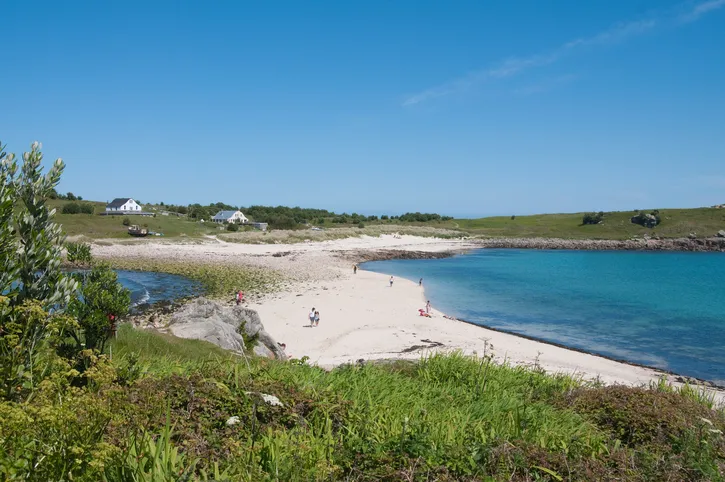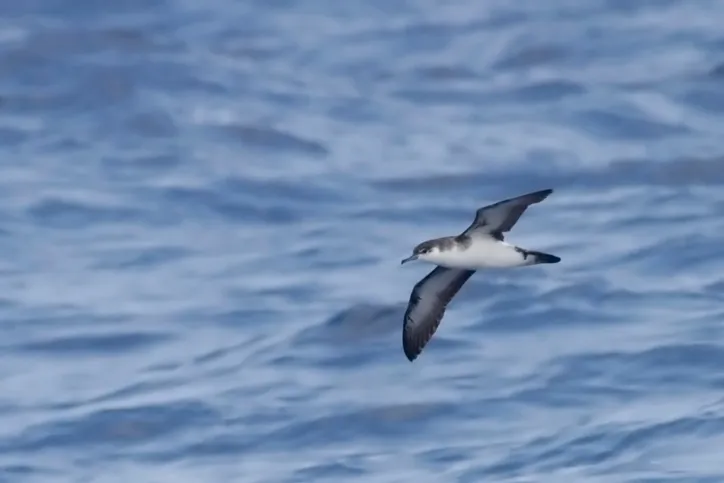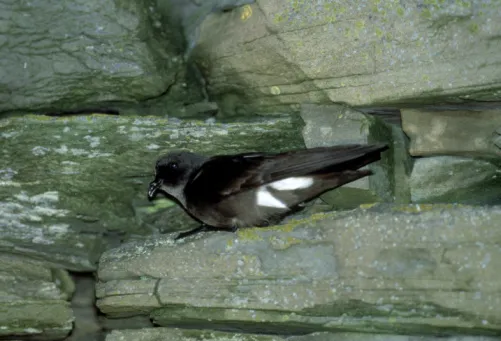A small boat is bobbing its way into the quayside, its passengers close enough to look quizzically at us and wonder what is so fascinating about the non-descript tuft of heathland around which we are huddled.

We're on Gugh – a tiny island tethered at low tide by a sand and shingle tombolo to the larger St Agnes – in the Scilly Isles and we're trying to talk to Manx shearwaters.
'Nope, no-one's home,' says Jaclyn Pearson and we move on to the next burrow. Her colleague Lydia leans into the burrow, holding a smart phone and plays the call of a Manxie. It's a screeching, cawing, bubbling sound, ever so slightly chicken like. She's hoping to hear a return call from within the nest. Again there is silence.
At the third nest we get an immediate bounceback from what Jaclyn tells us will be an adult male shearwater. At the time of our visit the females are out in the Bay of Biscay, fattening up ahead of the breeding season. The males hold the fort and I like to think the incumbent of this particular nest has been rather startled and, thinking his partner has returned ahead of time, is quickly trying to tidy up and make its subterranean lair just-so.

We don't see the bird itself – they only leave and come back to their nests in the dark, before dawn and after dusk – but even so hearing the sound of one is a magical experience.

Until recently, it was also rather futile. St Agnes had a huge rat problem and any encounter between a Manx shearwater chick unable to fly and a rodent tended to be brief and result in one fewer chick on the island.
Then a Seabird Recovery Project was launched, involving the RSPB, the Isles of Scilly Wildlife Trust and the local community with the aim of removing the rats. The £700,000 funding enabled bait traps to be stationed right across the islands and an incredible 3,000 rodents were caught.
The results are impressive. In 2013 (pre- rat eradication) the breeding population of Manx shearwaters amounted to just 22 pairs. That increased to 73 pairs in 2016. For more than 100 years there had been no records of chicks surviving but last year 32 chicks were recorded outside their burrows at night – 'stargazing' as Jaclyn puts it.
Before the rat-trapping campaign, storm petrels had given up the ghost altogether with zero breeding pairs recorded; in 2016 six pairs were identified.

This year, hopes Jaclyn, who oversees the project, will be even more special as there's every chance that the first generation of Manx shearwater chicks to survive will now be old enough to breed themselves. After I return home, Jaclyn drops me a cheerful line. 'They're in their burrows right now,' says. 'It's looking good.'
Later in the year I hear that 59 burrows were recorded occupied but 43 chicks recorded, 11 more than last year. Storm petrels also seem to be increasing again.
Bait stations remain in place, loaded with peanut butter in tracking tunnels and wax flavoured with chocolate, aniseed, fish and vanilla to entice rats if they return to the islands.
Rat eradication involves winners all round: farmers no longer have cables chewed through, and local wildlife lovers, which includes pretty much anyone who lives on the islands, get to see species that were almost extinct there. 'It really is fantastic,' says John Peacock, skipper of St Agnes boating. 'When they say Manx chicks have not been heard in people's lifetime here it's true - I'm proof of that, I've lived here all my life.'
Rats are an issue right across the Scilly Isles, which is a real frustration as the islands are a haven for both resident and passage birds as well as the occasional exotic migrant blown off course by Atlantic winds. Puffins have declined from 100,000 to just 100 pairs and many seabird colonies are in decline (though rats are not always the primary cause).
Plans are afoot to co-ordinate a rat-eradication plan for Tresco, along with its neighbour Bryher (at the lowest tide, rats would even be able to scuttle over the sandbars between the two) and uninhabited Samson.
St Mary's, the largest island, is trickier because of its larger population, explains , and biosecurity measures would need to be put in place around St Mary's and on all passenger and freight boats (checking bags, boat hulls) to ensure no stowaways undid the good work.
'There are nesting Manxies and stormies on these other inhabited and uninhabited islands so it would be a very beneficial project and also help the puffins - St Helens has rats and puffins,' says Jaclyn.
We play the Manxie call one last time. Another unseen occupant squawks back. For a bird that is so hard to see, even when it is right by you, it has made everyone's day.
